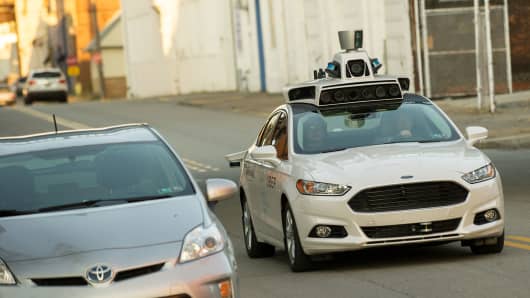After nearly 10 years of relentless hype for autonomous ("self-driving") vehicles, the bloom seems to be coming off the rose. In terms of the hype cycle outlined by research consultancy Gartner, autonomous vehicles are plunging down from the "peak of inflated expectations" into the "trough of disillusionment."
One form the disillusionment takes is skepticism toward AVs' alleged safety advantages. Last week, a pedestrian in Arizona was struck and killed by a "semi-autonomous" vehicle, i.e., a vehicle that will drive itself part of the time but requires a human driver as backup. The backup driver of another semi-autonomous vehicle was killed last year when it slammed into a semi-truck.
The other form of disillusionment has to do with a growing concern among urbanists that AVs will, by making personal-vehicle travel so much more convenient, induce more of it. They worry that AVs will increase vehicle miles traveled (VMT), further clogging America's already congested city streets.
More from Vox:
Pakistan's military is waging a quiet war on journalists
How sports leagues like the NFL are fanning the childhood obesity epidemic
Trump's legal team is in shambles. The timing is terrible.
I don't share the first worry — I have confidence that AVs will eventually achieve full autonomy and make good on their safety claims, radically reducing road fatalities.
But I do share the second concern. In fact, I don't think people are worrying about it enough. There are reasons to believe that any private autonomous vehicle industry will not just increase VMT, but will pursue more VMT aggressively.
It struck me as I read this piece in the New York Post about a new company called Vugo, which has contracts with about 3,500 Uber and Lyft drivers in New York City to install video screens in their vehicles. The screens will display video advertising and, at least initially, cannot be turned off or completely muted.
According to the Post, drivers in New York love the arrangement (though of course, everyone else finds it annoying AF). The money the drivers receive from Uber and Lyft, from direct fees charged to passengers, is barely getting them by. They need supplemental income. Thus, advertising.
And therein lies the germ of an economic dynamic that could doom AVs to fall short of their potential and do great damage along the way — the same way it did to much of the internet. I'm talking about advertising as a business model.
If shared fleets of autonomous vehicles come to be funded primarily by advertising, we will end up with an auto industry even more committed to auto supremacy than the current one — at best a reluctant partner in any effort to make cities denser and more livable, at worst a committed foe.
